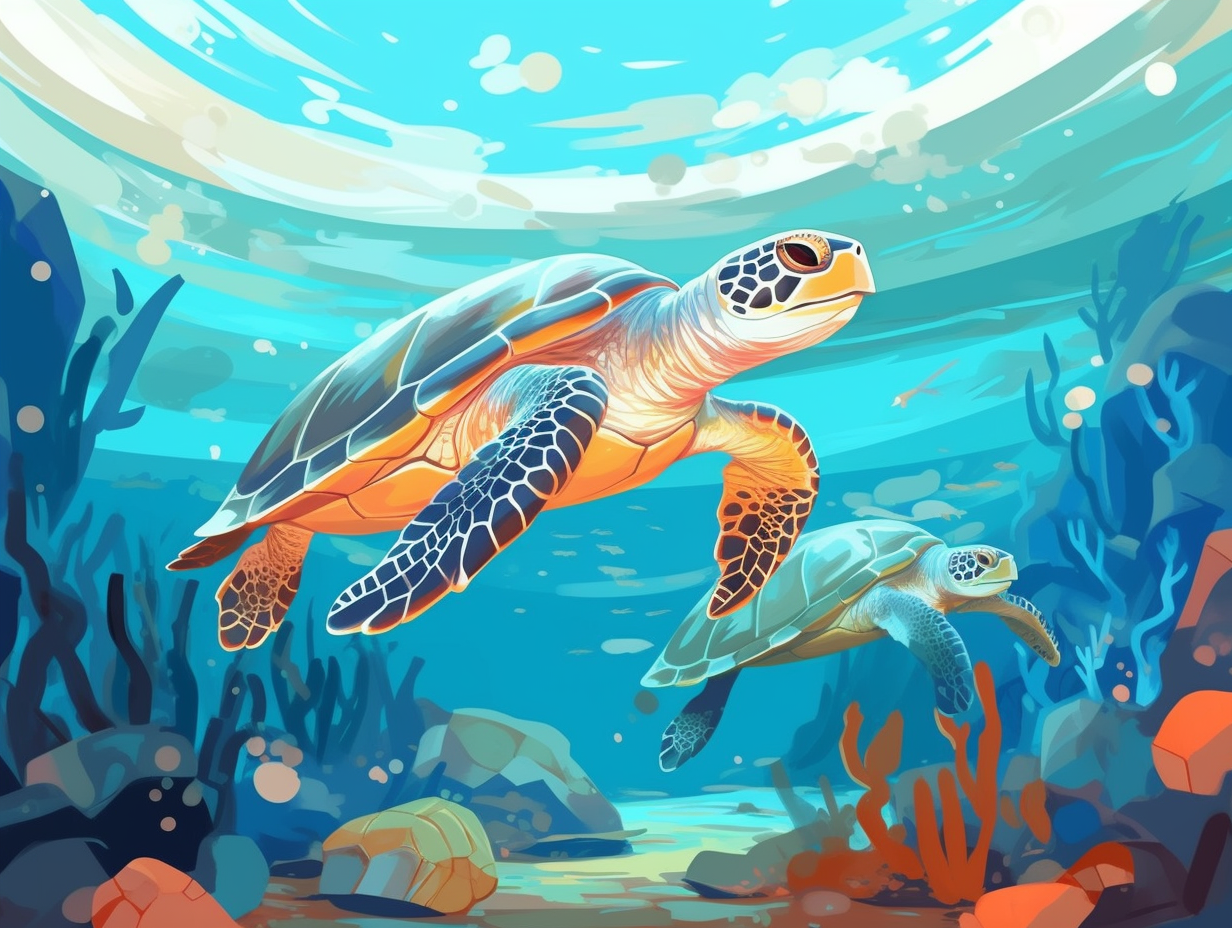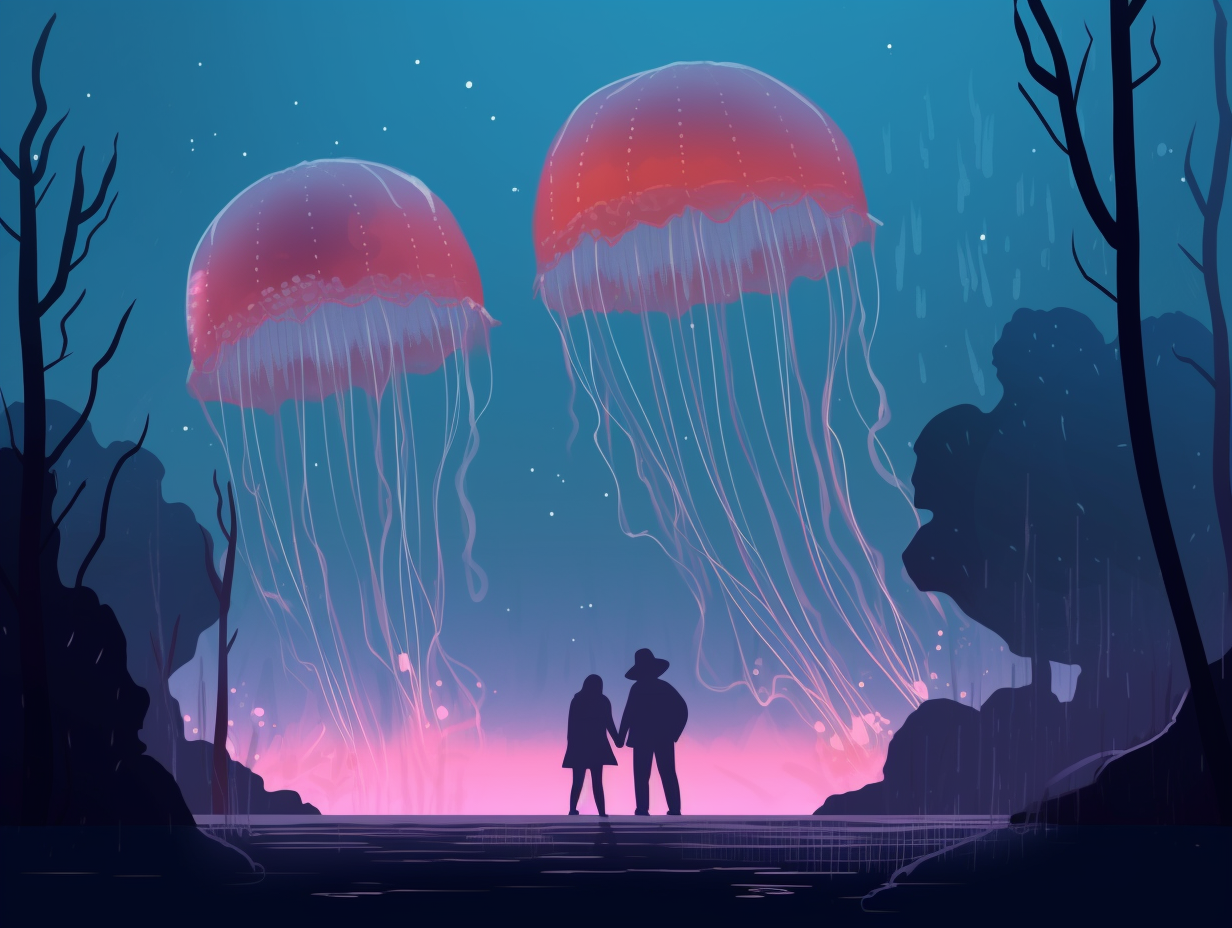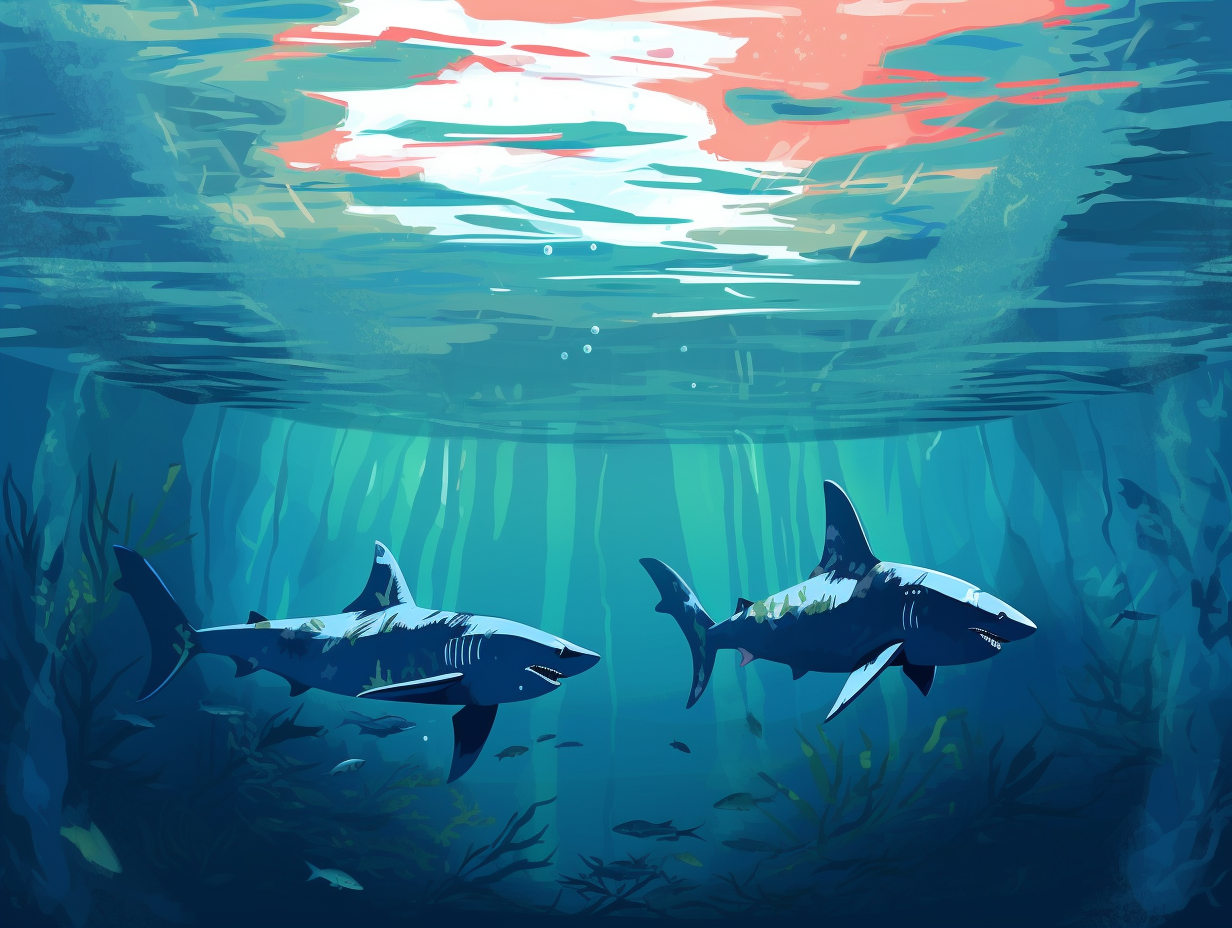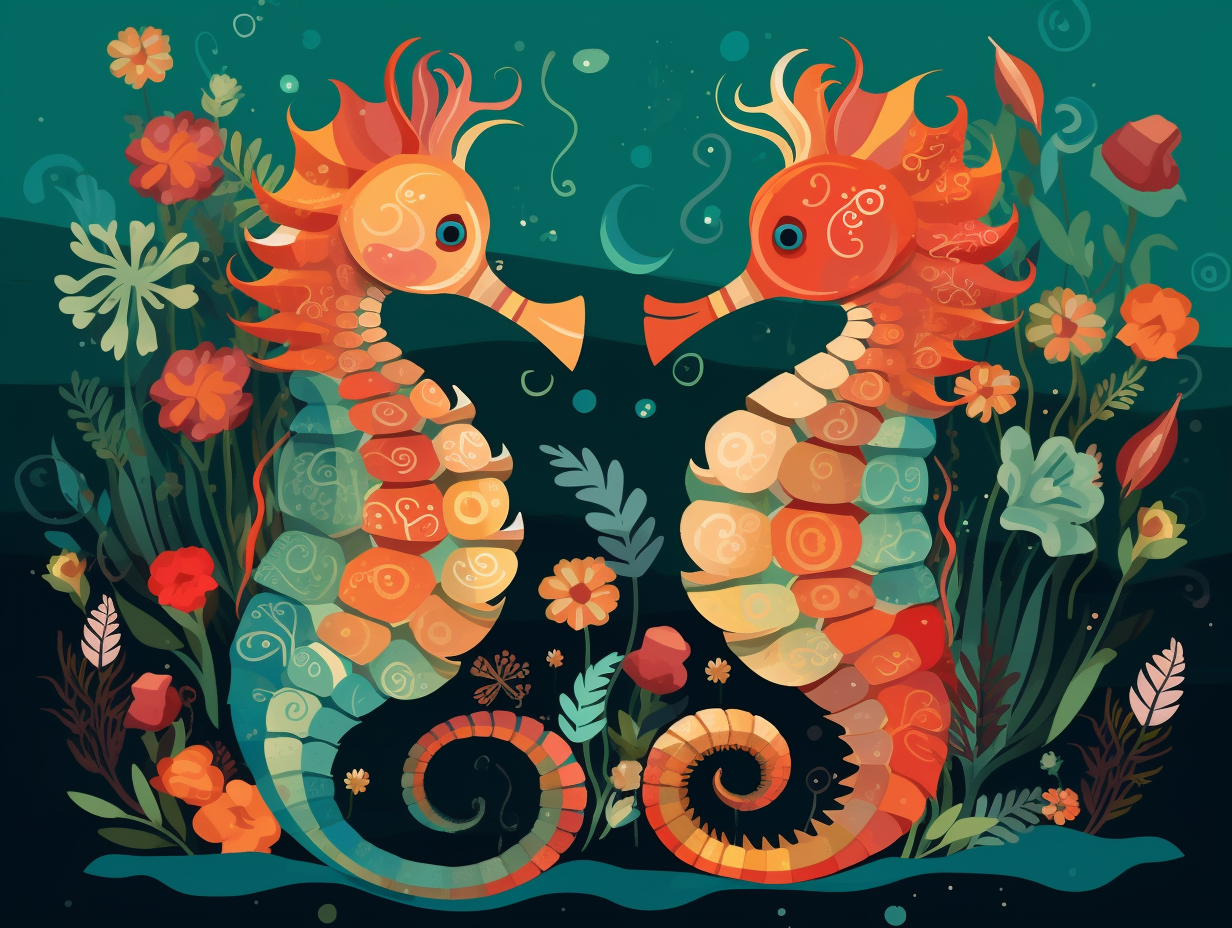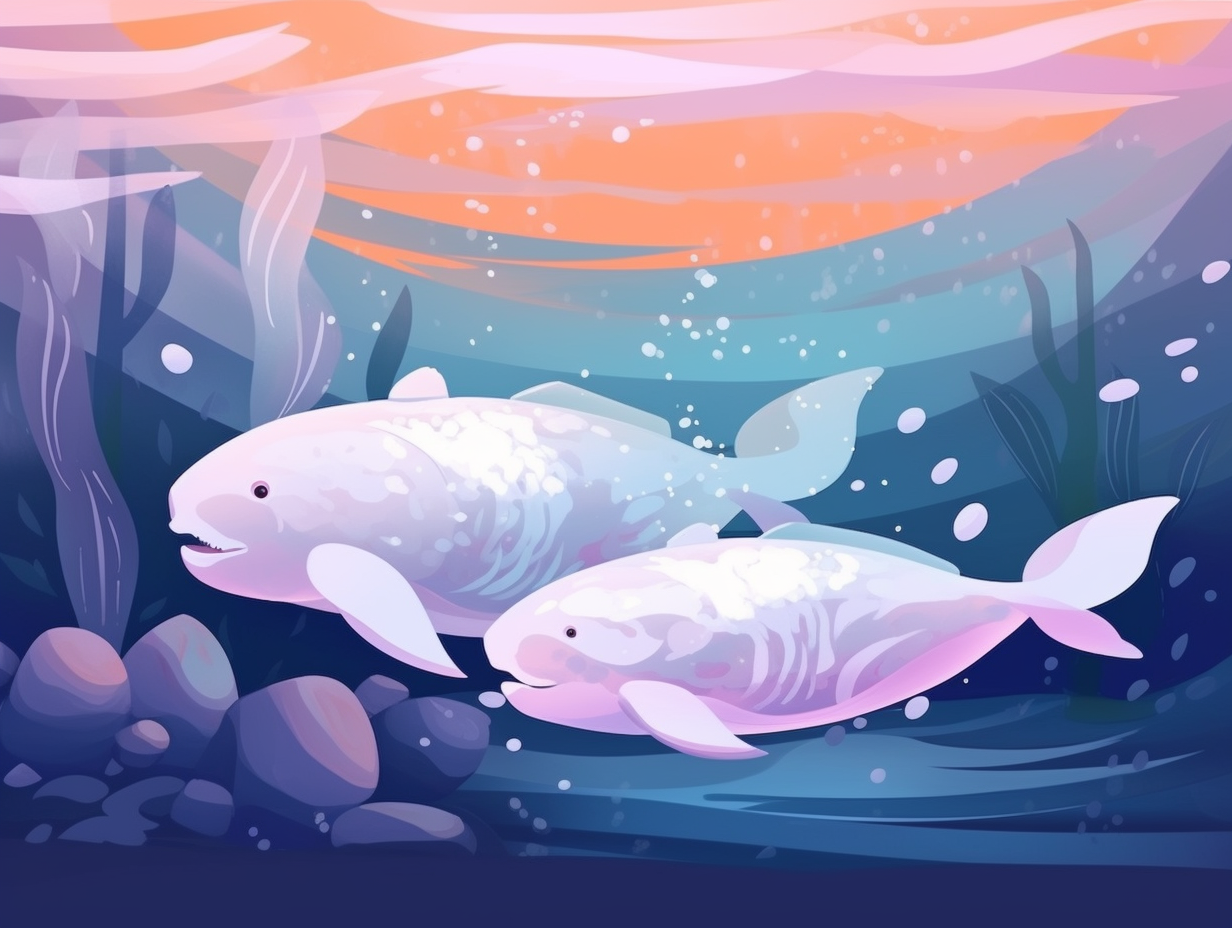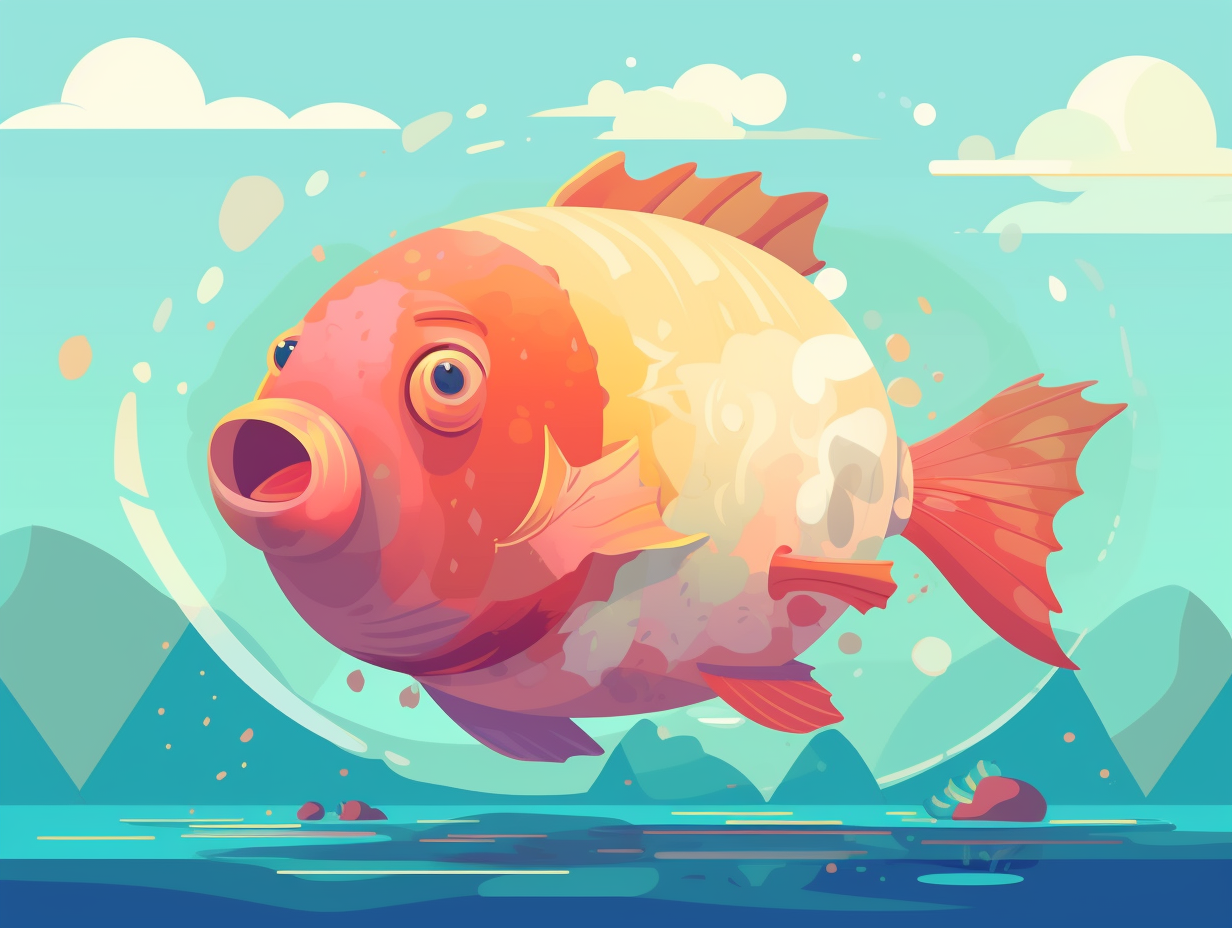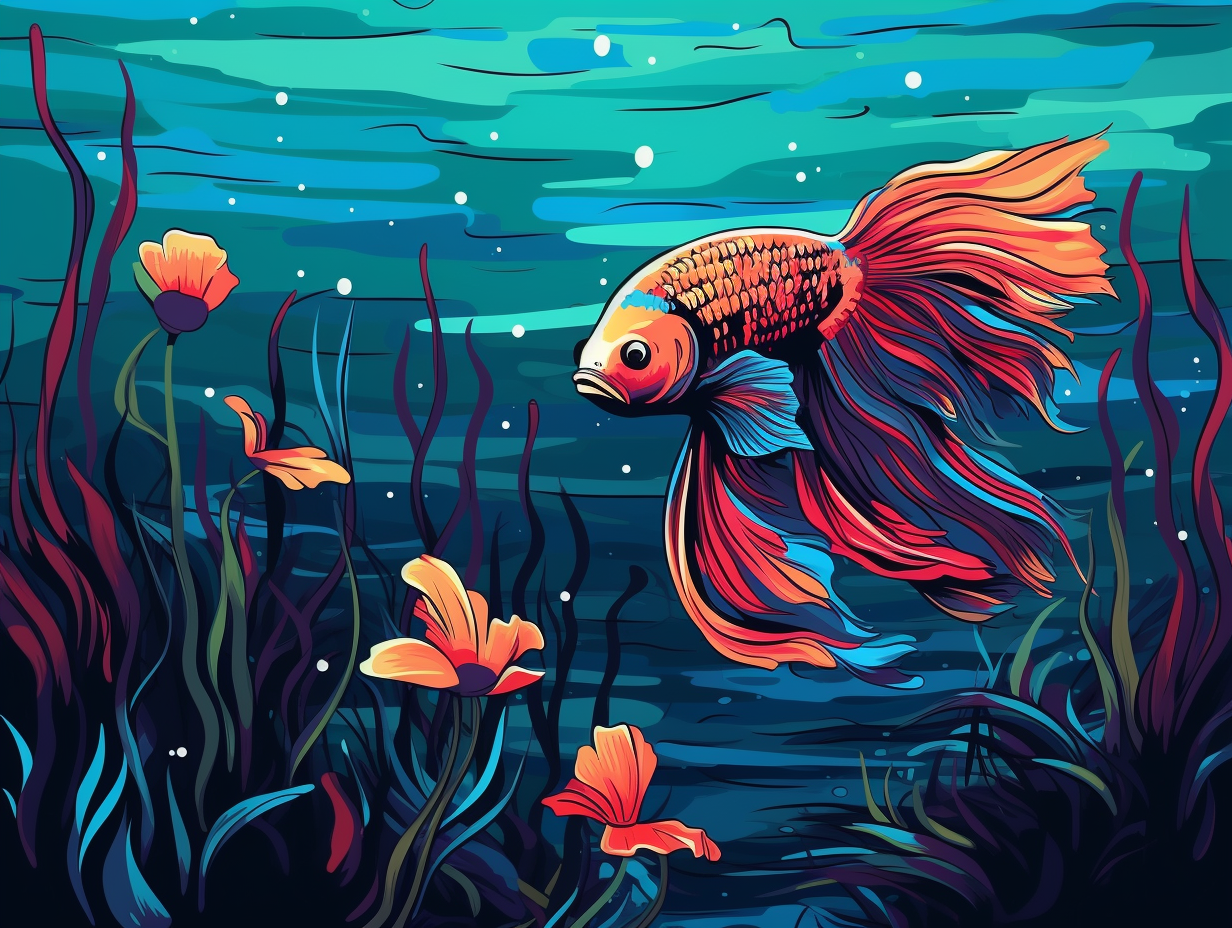Discover the Unbelievable World of Comb Jellies: Top 12 Fun and Fascinating Facts You Never Knew!

1. Interstellar Vegas Comb Jellies
In a galaxy not so far away, comb jellies hold auditions for interstellar Vegas acts, lighting up with the glitz and glamour of a Broadway star: Comb jellies can produce brilliant bioluminescent light using photoproteins, with 10 different clustered genes that enable them to generate a dazzling light show in the blink of an eye, all while their opsin genes and photoproteins work together to enhance their reproductive or defensive strategies.
Source => genome.gov
2. Comb Jelly Backdoor Strategy
Talk about a "backdoor strategy": Comb jellies, contrary to popular belief, actually release indigestible particles through pores at their rear end, not through their mouth, as recently discovered in a fascinating study on these wiggly wonders of the deep.
Source => ocean.si.edu

Did you know Anne the Shark swam a whopping 12,000 miles – a record-breaking feat – to find love across the ocean? Discover more about her incredible journey!
=> Fun Facts about Sharks
3. Disco Ball Comb Jellies
For those who think of disco balls when they hear cilia: behold, the comb jelly! It's not a funky hair tool from the '70s, but rather an oceanic leviathan that puts on a natural light show: These marvelous creatures are the largest non-colonial animals to use cilia for locomotion, growing up to 4.9 feet long, boasting bilateral symmetry, and stealing the spotlight with their bioluminescent displays and rainbow-like cilia strips that dazzle every observer underwater.
Source => thoughtco.com
4. Aquatic Buffet Demolishers
Behold the unassuming comb jelly, or as we like to call them: the aquatic all-you-can-eat buffet demolishers! These seemingly delicate creatures have an insatiable appetite worthy of a standing ovation at the Sea Life Awards of Gluttony: Seriously though, comb jellies can consume up to 10 times their weight in edible zooplankton each day, feasting on a diverse menu of eggs, larvae, copepods, sea jellies, and even other comb jellies. Beware their lobe-snapping prowesses, fellow marine dwellers, lest you become part of their impressive daily banquet.
Source => aquariumofpacific.org

5. Adaptable Feeding Techniques
Move over, vacuum cleaners and spaghetti monsters, there's a new sheriff in town who's hogging the buffet: Comb jellies, those aquatic predators, come equipped with their exclusive feeding techniques - from Lobed comb jellies using funneling lobes and auricles to gobble up plankton, to sea walnuts with sticky tentacles, and let's not forget Beroe species who chow down on other comb jellies by swallowing them whole with ciliated mouths that won't allow any escape. These gluttonous habits can spell ecological doom for plankton populations and wreak havoc in new habitats if comb jellies were to invade.
Source => montereybayaquarium.tumblr.com
6. Balancing Beats of Comb Jellies
What do comb jellies and DJs have in common? They both know how to balance their beats! Comb jellies have a fascinating internal structure called the statocyst which enables them to maintain their vertical position underwater: They expertly coordinate the rhythms of their ciliary comb rows, ensuring they stay upright and smoothly navigate aquatic environments like a jellyfish on the dancefloor.
Source => pubmed.ncbi.nlm.nih.gov
7. Psychedelic Sea Disco Balls
Who needs a light show when you have comb jellies? Watch them groove and glide like psychedelic sea disco balls: Comb jellies, belonging to the phylum Ctenophora, propel themselves using eight rows of cilia (combs) that create a mesmerizing, flickering rainbow effect, quite distinct from their stinging tentacled Cnidaria cousins.
Source => aquariumofpacific.org
8. Ancient Comb Jelly Glow-Up
Talk about an ancient glow-up: Scientists have unearthed a fossil of an over 500-million-year-old comb jelly species that sported a more complex nervous system than its modern descendants, debunking the notion that organisms grow simpler as time goes by. Who knew this vintage sea disco ball had such an evolved party trick up its sleeve?
Source => newscientist.com
9. Underwater Flamenco Dancers
In a world of underwater flamenco, the comb jellies take center stage with their stunning light shows and fancy footwork: These bejeweled dancers of the deep sea are surprisingly the largest animals to use cilia for locomotion, equipped with comb-like rows of fused cilia that gracefully propel them through water, while some members of this flashy ensemble can be as tiny as just one millimeter wide!
Source => ocean.si.edu

10. Sticky Bandit Comb Jellies
Just when you thought it was safe to go back in the water, you find out that comb jellies are the sticky bandits of the sea world, not the stinging perpetrators we once believed: In reality, these creatures lack the stinging cells found in jellyfish tentacles and instead use colloblasts, sticky cells that help them snatch up their prey with ease.
Source => ocean.si.edu
11. Disco Dancers of the Deep
Behold the disco dancers of the deep blue sea, grooving and shimmering in sync with the ocean's beat: comb jellies, or ctenophores, possess rows of fused cilia called combs that not only grant them locomotive talents, but also create a hypnotic light show by scattering light in all directions, earning them the title of the world's most fabulous marine critters.
Source => ocean.si.edu
12. Web-Slinging Ocean Heroes
Step aside, Spider-Man, and make way for the ultimate web-slinger of the ocean: Comb jellies! These gelatinous superheroes boast a tangled web of neurons called a nerve net, which may represent a second, independent evolutionary origin of a nervous system. This amazing nerve net connects stringy neurons through shared cell membranes, interacting with other nerve cells such as sensory cells and mesogleal neurons, though the exact means of communication remains a deep sea mystery.
Source => sciencenews.org
Related Fun Facts


